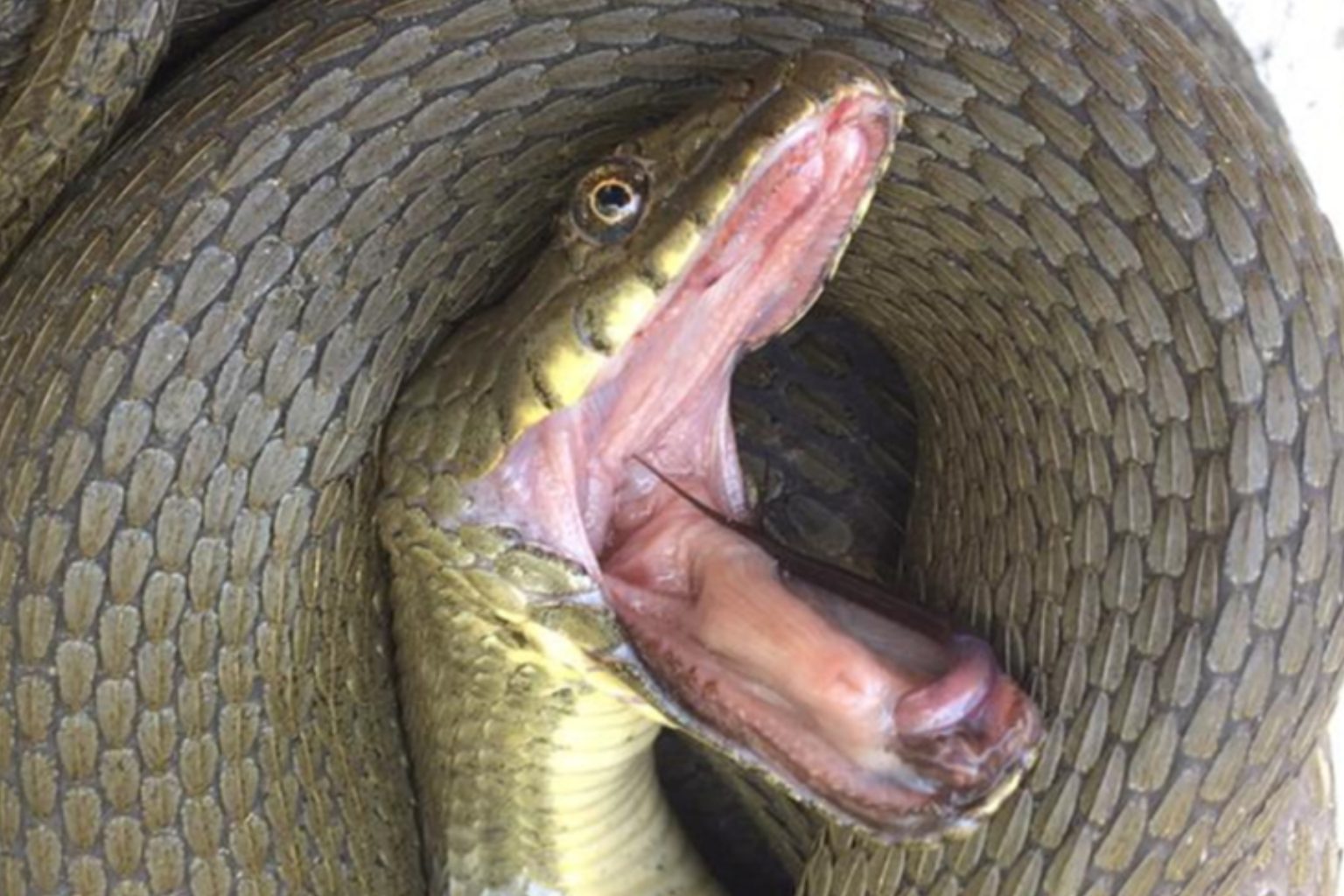A new study published in the journal Biology Letters reveals that a species of snake called the dice snake is adept at faking its own death in order to avoid being eaten by predators. The snakes put on a convincing show of dying by lying still, with some adding dramatic touches such as defecating, leaking blood from their mouths, and releasing a foul-smelling musk from their bodies. Researchers observed 263 dice snakes and found that 124 of them went the extra mile by smearing themselves in feces, while 28 leaked blood from their mouths. The researchers believe that these behaviors work synergistically to make the death-feigning display more dissuading to predators and give the snakes a chance to escape.
Playing dead, or apparent death, is a common tactic used by various species across the animal kingdom to avoid predators. Predators often prefer live prey and may be less likely to eat an animal if they believe it is already dead. This tactic can give prey animals a chance to escape when predators are momentarily distracted or decide to leave behind what they believe is a corpse. The researchers found that dice snakes, which are native to Europe and parts of Asia, exhibit a range of behaviors while faking their own deaths, including lying still, leaking blood, and smearing themselves in feces to enhance the illusion of death.
According to the researchers, dice snakes that used the blood and feces approach spent less time faking their own deaths than those who did not, suggesting that these tactics are synergistic and work together to enhance the effectiveness of the death-feigning display. The study highlights the functional integration of antipredator behaviors across different phases of predator-prey interactions and emphasizes the need for future research to explore the sequential display of behaviors in more detail. The researchers believe that these behaviors help the snakes exploit the learned aversion of predators towards sick or dead prey, giving them a better chance of survival in the wild.
The study sheds light on the fascinating behavior of dice snakes and their ability to deceive predators by faking their own deaths. By using a combination of lying still, leaking blood, and smearing themselves in feces, these snakes are able to create a convincing illusion of death that may deter predators from attacking. The researchers hope that this study will inspire further research into the intricate behaviors of prey animals and the ways in which they interact with predators in the wild. Understanding these behaviors can provide valuable insights into the evolutionary adaptations of different species and how they navigate the challenges of survival in their natural environments.
The research on dice snakes and their death-feigning behavior adds to our understanding of the complex strategies that prey animals use to evade predators in the wild. By showcasing how these snakes engage in a range of behaviors to create a convincing illusion of death, the study highlights the fascinating ways in which animals adapt to their environments to enhance their chances of survival. As we continue to explore the interactions between predators and prey in nature, studies like this help us appreciate the remarkable diversity of strategies that animals employ to navigate the dangers of the natural world. The findings of this study may also have implications for conservation efforts aimed at protecting vulnerable species from predation in their habitats.


